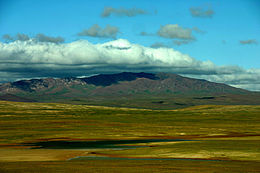| UNESCO World Heritage Site | |
|---|---|
 Hoh Xil in August | |
| Location | Qinghai |
| Criteria | Natural: (vii)(x) |
| Reference | 1540 |
| Inscription | 2017 (41st Session) |
| Area | 3,735,632 ha (9,230,950 acres) |
| Buffer zone | 2,290,904 ha (5,660,950 acres) |
| Coordinates | 35°22′49″N 92°26′21″E / 35.38028°N 92.43917°E |
| Hoh Xil | |||||||||||
|---|---|---|---|---|---|---|---|---|---|---|---|
| Chinese name | |||||||||||
| Simplified Chinese | 可可西里 | ||||||||||
| Traditional Chinese | 可可西里 | ||||||||||
| Literal meaning | Blue ridge (in Mongolic) | ||||||||||
| |||||||||||
| Tibetan-origin name | |||||||||||
| Simplified Chinese | 阿卿贡嘉 | ||||||||||
| Traditional Chinese | 阿卿貢嘉 | ||||||||||
| Literal meaning | Lord of ten thousand mountains | ||||||||||
| |||||||||||
| Tibetan name | |||||||||||
| Tibetan | ཧོ་ཧོ་ཞི་ལི ཨ་ཆེན་གངས་རྒྱབ | ||||||||||
| |||||||||||
| Mongolian name | |||||||||||
| Mongolian Cyrillic | Хөх шил | ||||||||||
| Mongolian script | ᠬᠥᠬᠡ ᠰᠢᠯᠢ | ||||||||||
| |||||||||||
Hoh Xil or Kekexili (Mongolian for "Blue Ridge", also Aqênganggyai for "Lord of Ten Thousand Mountains"), is an isolated region in the northeastern part of Qinghai-Tibet Plateau. On July 7, 2017, the Hoh Xil in Qinghai was listed among the UNESCO World Heritage Sites as "the largest and highest plateau in the world".[1]
